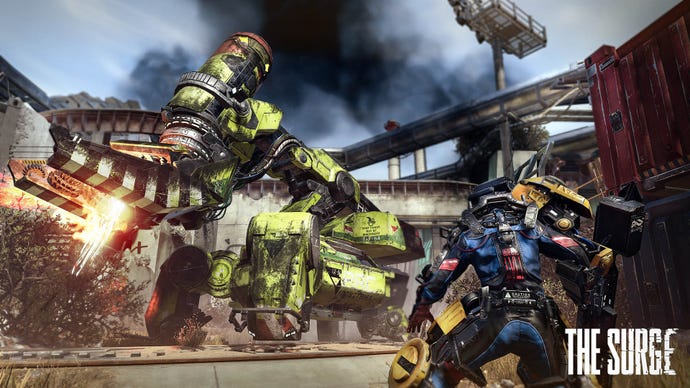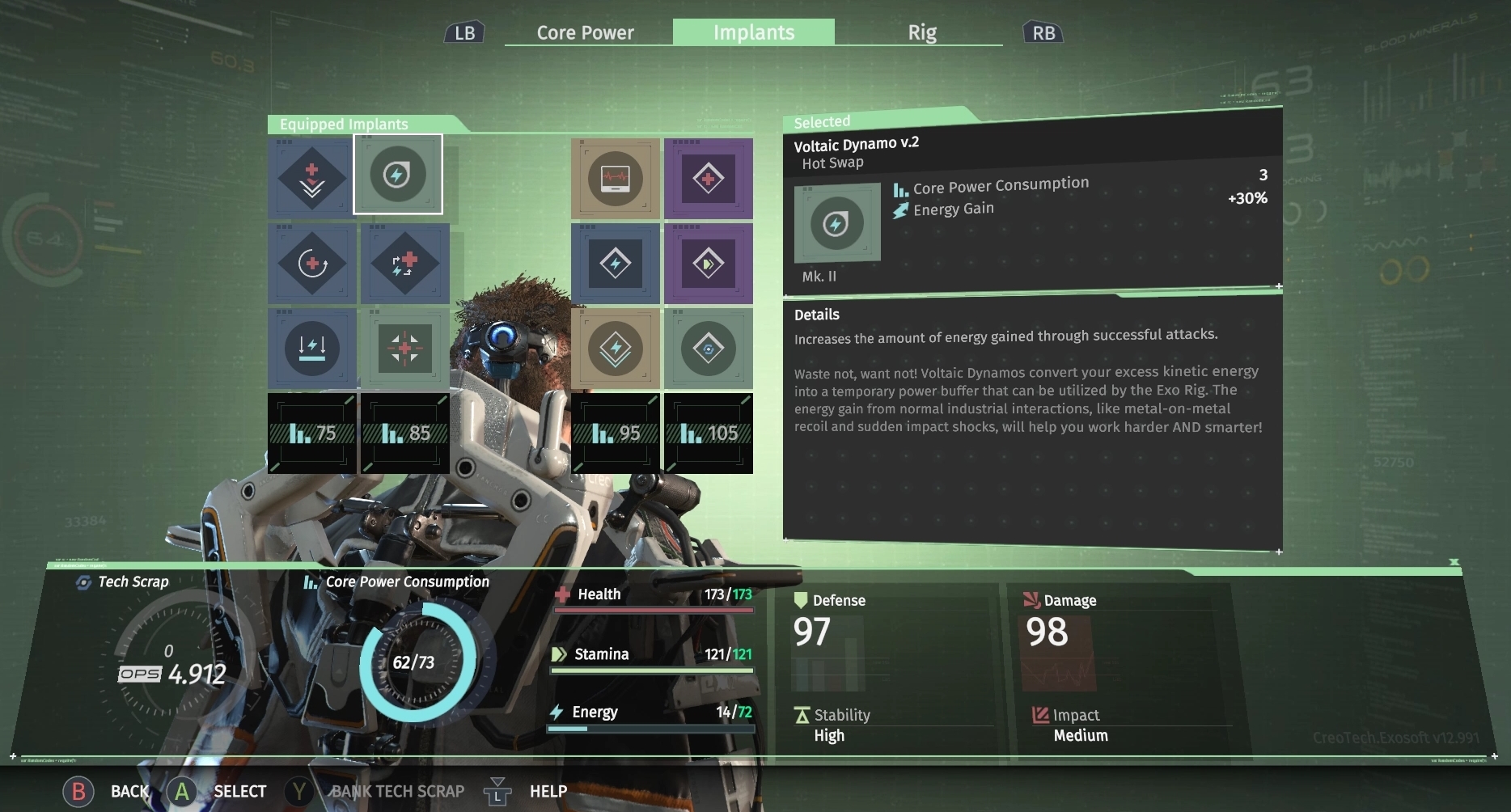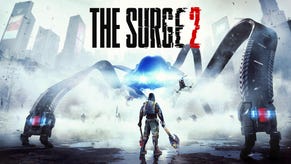The Surge review: your aspirations can be your own worst enemy
The Surge is a game of many triumphs, but it's also one that will cause you more frustration than any other Souls-like.
"The Surge is at its best when it’s trying new things, but falters when it tries to appropriate something it doesn't completely understand."
I expected a great many things from Deck13’s second game after Lords of the Fallen. The studio’s deeply flawed first outing certainly had its moments, but ultimately fell victim to its own confounded design and clunky controls.
In that sense, The Surge is absolutely the better game, but its most disappointing aspect is how its makers continue to fall for the same mistakes. The Surge follows the Souls formula loosely, it keeps elements like losing your only form of currency upon death, how stamina-based everything you do is, and other facets around the way progress is made both for your character and through the level.
There is no way of talking around these inspirations, so you should come to terms with the fact we’ll be making a lot of comparisons to Souls games. The Surge isn’t just a Souls-like because it has challenging combat, there’s much more to it than that, even if the game tries to innovate in several areas.
The one thing The Surge does very differently and the thing that’ll immediately stand out, is the combat. Instead of light and heavy attacks, your main attacks are horizontal and vertical, mapped to the same light and heavy buttons you’d find in other games, respectively. Mixing them in different ways produces different combos, and they generally consume the same amount of stamina and do the same damage. The reason why you’d go for one over the other ties nicely into the ability to target individual body parts.
A horizontal swipe, for instance, works great when targeting the head, whereas a vertical strike is more suited to cutting off an arm. That said, using either of the two achieves the same results, but you’ll have a better chance at getting what you want by using the appropriate swing. Mixing and matching can be important in cases where you want to stagger an opponent by performing a certain combo.
Instead of rolling, you have a Bloodborne-style dash. The range on it is very short, however, and so, in many situations, you're better served dashing twice. Because The Surge has its roots in Lords of the Fallen, the dash doesn’t feel as smooth as it should. This also means you can’t cancel into a dash when things don’t pan out, which will drive you mad until you learn how to always account for these animation priorities.
All of this consumes stamina, which is bog standard for this sub-genre of RPGs. The energy bar, a third bar below health and stamina, is where things get interesting.
Energy is built up by landing hits. This energy is then used to perform finishing moves, which allows you to cut off the limb you’ve been targeting. Most enemies have decent health bars, and you’ll almost always have enough energy to land a finishing move in every engagement.
Targeting individual body parts gives you schematics for the piece of armour or weapon the enemy had equipped. This is also a good way of farming upgrade materials for your gear.
This may sound simple enough but in practice there’s more to it than meets the eye. For a lot of enemies, not every limb is going to be armoured. Though you can still target unarmoured parts, your chances of cutting it off gets lower. On the flip side, targeting unarmoured limbs means you’ll be done with the encounter faster.
The Surge is so committed to this that moving the right stick when you’re locked onto an enemy switches the lock to a different body part, instead of to the next target like most games. There’s a dedicated button for switching targets here, which takes a while to get used to. Energy is also used to power your drone, the only form of ranged combat in the game. Depending on the drone, you can either benefit from passive abilities like shields or use it to attack enemies.
Killing enemies awards you with Scrap, which you'll also find in bundles hidden around the level. Scrap is used to upgrade your Core Power. In The Surge, you don’t put points into individual stats. In fact, most stats typical of Souls games are nowhere to be found here. Instead, you upgrade your Core Power, which acts as kind of an equip load for your armour, as well as allow you to equip Implants. Armour pieces and Implants (but not weapons) consume power, so you’ll have to distribute them in a way that keeps usage at or below your current max capacity.
The Surge borrows the concept of Implants from Deus Ex: Mankind Divided. Like in that game, and in Nier: Automata to a lesser extent, your build is largely defined by which implants you choose to equip at any one time. Think of Implants as a unification of items and rings from Dark Souls into one, thematically-appropriate concept.
"Running around levels over and over can be bothersome, but the drop in quality in the second half of The Surge is the real issue here."
This system, although novel, is unnecessarily complicated. The game splits available Implants into three types, Hot Swap, Injectables, and Hardwired. Except this is a completely misleading way to differentiate them.
Hot Swaps are passive abilities that you can equip in the field. Injectables are active abilities and items like boosts and health-restoring consumables. But, all Injectables are Hardwired, and this is where things get confusing. Then you have Hardwired, which cover Injectables and other passive abilities that can’t be hot swapped.
This poor organisation took me a while to understand, as I constantly made trips to the Medbay to install an Implant when I didn’t need to. The game would be better served by having an item/consumable system (for things that replenish on death but need to be activated) separate from the Hardwired and Hot Swap (rings) Implants.
Implants rely on power, but you can only have so many equipped at a time, and this number is determined by your EXO suit. Separate from armour, EXO suits are the mainframe the entire build is based on. There are only two of these in the game, beyond the starting rig. The other two are introduced upon reaching certain parts of the story, and each one expands your available slots even further.
Though, I have to say, the first EXO I came across was placed so inconspicuously inside a display case that most people won’t think to break. I would have preferred a more direct approach, seeing as EXO suits are of supreme importance to how The Surge works.
Build management is done at OPS stations, which function like bonfires. You’ll find a Medbay and a Gear Assembly station at every OPS station. The Medbay lets you level up and equip/unequip Implants, and the Gear Assembly is used for crafting schematics and upgrading gear. Unlike bonfires, there is only one OPS station per level. This doesn’t end up being a problem in the first half of the game because of how interconnected the world is.
You’re always one shortcut away from a level's OPS station. These shortcuts are unlocked as you make progress by finding and activating them.
In the latter half, levels get bigger and enemy placement around choke points means running to and from certain areas is a chore. Late game levels still maintain the shortcut-driven, interconnected design, but these connections start feeling like patchwork rather than part of the level’s natural progression, forcing you through claustrophobic corridors that branch into multiple paths.
There’s no form of fast travel, so if you want to return to the starting area late-game, you’re going to have to run through almost the entirety of the levels in between to get to the tram that’ll get you there. And you will need to, because there’s also a bizarre Metroidania aspect of The Surge that locks you out of certain parts of every level until you either have a high enough Core Power to overcharge a circuit, or posses a specific item for opening security doors.
Running around levels over and over can be bothersome, but the drop in quality in the second half of The Surge is the real issue here.
It’s at this point that the game starts introducing enemies that force you to fight them a certain way. A lot of those are placed in such a way that they're impossible to avoid. Some must be fought in narrow corridors that don’t do the game’s chunky enemy designs any favours. To make matters worse, some will often have area-of-effect attacks that are hard to dodge. For others, they’re so incredibly agile that waiting for their attack windups as a window to hit them is a fool’s errand.
You’re better served just attacking once before backing off a few times until the deed is done. At best, this comes off as artificial padding. At worst, you feel like you have to kowtow to the game’s unforgiving nature every time you want to explore certain parts or follow a specific route.
Of course, you could always block some of these attacks, but the block system in The Surge feels like it was hastily thrown together at the last minute. Blocking prevents you from moving. That’s right, you either block or move. Just holding the block button depletes your stamina so quickly that I am not sure exactly what purpose it serves.
If you decide to block in the middle of an enemy’s combo, a single hit will likely deplete what’s left of your stamina, leaving you defenceless against the rest of their attacks. Unless you manage to time it so you block just before the hit lands, the enemy'll be knocked back for a short time, but I could never quite get the timing down. This poor implementation carries over to the game’s jump and duck moves, which I never used once after their first introduction. To perform a jump or a duck, you have to press the block button simultaneously while pushing up or down on the right stick.
You can only do this once before you have to let go of the block button and repress it to do this again. I can’t think of a single way this would be a good idea to try in any fight. Enemies in The Surge hit so hard it’s practically suicide to fumble with this clumsy setup mid-fight. Once again, a wholly unrealised system that does not justify its existence.
As far as I am concerned, the dash is your best way of avoiding hits. Even then, there’s either a lack of invincibility frames or they’re so narrow that they make certain situations more frustrating than they should.
The Surge’s world is colourful, but suffers from the unfortunate side effect of being set in an industrial facility. You’re only ever going to see so many boxy, metal-made structures and stacked containers before it gets boring. Certain parts of the game, especially in the last couple of hours, introduce new locations that make for a nice change of scenery.
These bland location designs result in a real lack of surprises, which, over time, leaves you reluctant to explore. This is even more noticeable in The Surge because you’ll be returning to old areas multiple times. Finding your way around a place you left six hours ago becomes a challenge when everything looks like it's working off the same general aesthetic.
The story is told mostly through environmental techniques, audio logs, and in some conversations with NPCs. The plot itself doesn’t offer anything you haven’t seen before; some big corporation starts out meaning well but ends up driven to the unknown by a megalomaniac leader. As much as The Surge tries to borrow Dark Souls’ minimalist storytelling, it comes up short because of how it chooses to execute the attempt.
There's no point in comparing stories in those games with The Surge’s. Rather, the point is in how they’re delivered. NPC encounters in Souls always happen in safe places, where you’re never constantly having to watch your back. This makes these conversations all the more poignant. Audio logs are treated like collectables in The Surge, a big mistake that means you’ll be picking many of them up as you’re running for your life. By the time you get a chance to listen to them, you’ll have lost nearly all context.
"There are enough inconsistencies here to ward off the faint of heart, but there are also moments of brilliance that no other game in this sub-genre offers."
This all comes back to how The Surge is at its best when it’s trying new things, but falters when it tries to appropriate something it doesn't completely understand. For instance, the lack of focus on boss fights means the few in there are memorable. Every boss has a unique mechanic that you will learn after dying to it repeatedly, but once you do pick it up, the next run will be much easier.
Most bosses are also close enough to the OPS stations – assuming you unlocked all possible shortcuts, that the trip is relatively short. But, in perhaps another misguided way for Deck13 to introduce unnecessary difficulty, getting to some of them can be a pain if some ultra-challenging enemies decide to block your only route of access.
These shortcomings are all a real shame, because the game goes the extra mile in many ways to offer its own approach to the Souls formula, even down to its options-rich menu and HUD. The Surge is also a game that pauses the action when you’re in the menu, and even saves every few seconds so you don’t have to start a run fresh when the power goes out.
Ultimately, the Souls faithful with enough patience to get over its quirks and missteps will enjoy The Surge, but casual RPG fans may not. The lack of online co-op also means the subset of Souls players that rely on others' help to get through tough areas, are left to either power through on their own, or drop the game altogether.
As someone who considers Souls games among their all-time favourites, I am left very conflicted on The Surge. There are enough inconsistencies here to ward off the faint of heart, but there are also moments of brilliance that no other game in this sub-genre offers.
This review is based on the PC version of the game. The Surge is out May 16 on PC, PS4, and Xbox One.





















.png?width=291&height=164&fit=crop&quality=80&format=jpg&auto=webp)

